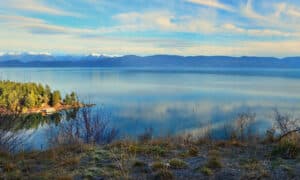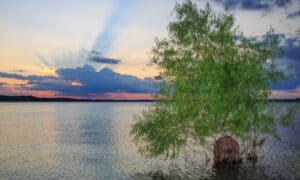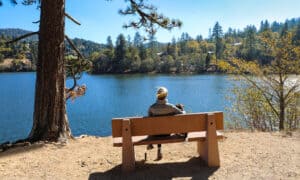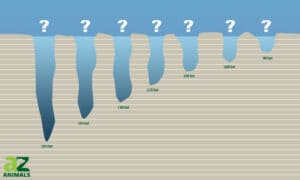The 12 Deadliest Lakes in the World
@media (min-width: 481px) {
.mobile-top-content {
display: none;
}
}
#mobileTopContentCTACarouselControls { overflow: hidden; text-overflow: ellipsis; white-space: nowrap; }
.mobile-top-content .more { color: #fff; }
.mobile-top-content a { color: #fff; text-decoration: underline; }
.mobile-top-content a:hover { color: #fff; text-decoration: underline; }
@media (max-width: 480px) {
.mobile-top-content {
background-color: #06a10b;
color: #fff;
text-align: center;
/*height: 60px;
padding-top:5px;*/
font-size:80%;
/* display: block; */
margin: 0px -30px;
}
}
Lakes provide humans and wildlife a plethora of functions and benefits, ranging from drinking water, habitat or residency, and hydroelectric power. However, not all lakes give life – some of them can take life and destroy wildlife. There are various reasons why lakes can be so deadly. From being nestled near volcanoes down to getting dumped with radioactive and toxic chemicals, several lakes around the globe can be so dangerous that they could kill. This article will list down the 12 deadliest lakes in the world, where to find them, and the tragic stories that lie underneath.
The 12 Deadliest Lakes in the World
Lake Nyos
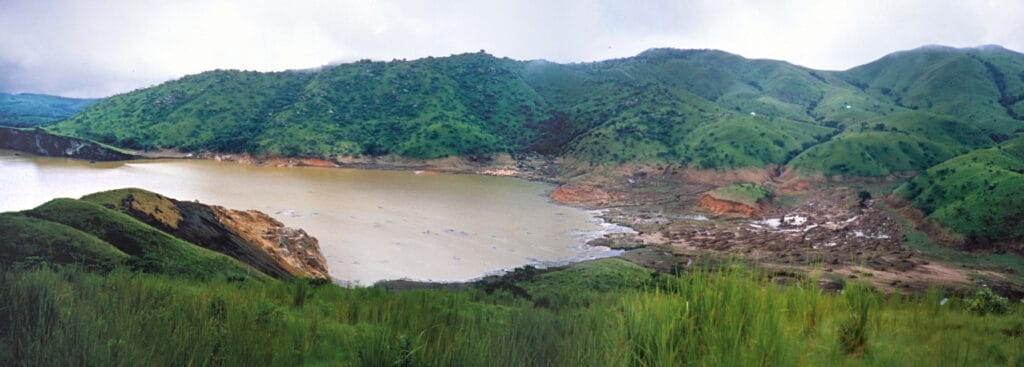
United States Geological Survey / This image is in the public domain in the United States because it only contains materials that originally came from the United States Geological Survey, an agency of the United States Department of the Interior. For more information, see the official USGS copyright policy.
Lake Nyos is a crater lake in the Northwest Region of Cameroon. It’s a deep lake high on the crater rim of an extinct volcano in Cameroon’s Oku volcanic plain. Although it may appear to many as an ordinary lake, it is considered the world’s deadliest. The Lake Nyos Disaster, which occurred in 1986, rocked Africa when the lake unexpectedly unleashed a giant cloud of carbon dioxide in the middle of the night, killing over 1,700 people living around the lake and 3,500 animals. After the disaster, most of the towns and villages in the area were abandoned.
The cause of the gas explosion may be summed up in two words: carbon dioxide. The carbon dioxide in Lake Nyos was suppressed beneath the lakes’ waters until it was released quickly, resulting in a spontaneous, swift, and quiet disaster.
Lake Natron
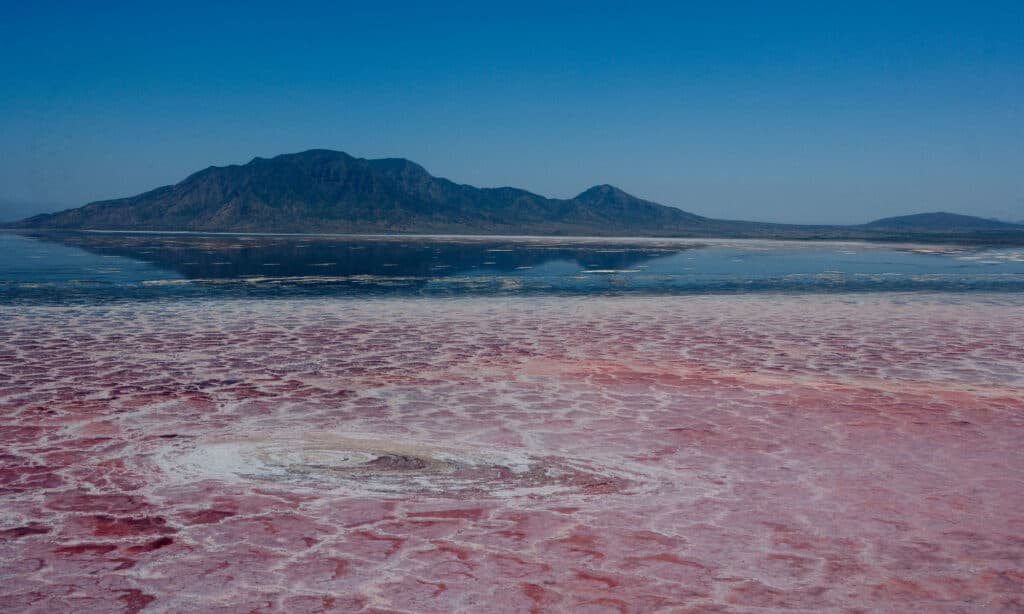
iStock.com/Mario Faubert
Africa is not only home to deserts and wildlife. It also has many rainforests, savannas, and lakes, with the greatest of them ranking as the world’s second-largest freshwater lake. Yet, the continent is also home to the infamous killer lakes that no wildlife or human settlement is known to be kept safe.
Located in Tanzania, Lake Natron is considered one of the deadliest lakes in the world. It’s a very picturesque lake that’s home to millions of flamingos. It is, nevertheless, extremely toxic to humans. The high amounts of evaporation in the area have resulted in alkalinity of up to 12 pH. The cyanobacteria that reside in the lake have turned it crimson. Yet, contrary to popular belief, the alkaline waters of Lake Natron, in reality, sustain a healthy ecology of flamingos and other wetland birds, tilapia, and the algae that enormous flocks of flamingos feed.
Lake Kivu

iStock.com/atosan
Along with Lake Nyos, Lake Kivu is another killer lake in Africa. It is among the only three “exploding lakes” globally and is one of the deadliest lakes known to mankind. On the border between Rwanda and the Democratic Republic of the Congo, Lake Kivu is one of several lakes that line the East African Rift Valley. The famed African lake has a surface size of 1,040 square miles (2,700 square kilometers) and is one of the continent’s largest. Lake Kivu is a fascinating subject for scientists and a potential source of risk and riches for the millions of people living nearby due to its strange mix of characteristics.
Although Lake Kivu is a beautiful lake, it acts differently than most deep lakes, making it dangerous. The picturesque Lake Kivu has the potential to erupt in a rare limnic eruption, releasing lethal chemicals into the atmosphere.
Lake Monoun

Prosper Mekem / Creative Commons – License
Lake Monoun, a crater lake in Cameroon’s West Province, is another dangerous African lake that erupted in the 1980s. On August 15, 1984, a limnic eruption at the lake occurred, resulting in the release of a significant amount of carbon dioxide and the deaths of 37 individuals. Lake Monoun is one of the only three lakes in the world with significant amounts of gas absorbed and repressed deep beneath the lake’s water surface, creating the ideal conditions for a limnic eruption. When dissolved CO2 erupts from deep lake waters, creating a gas cloud that can suffocate wildlife, cattle, and humans, it is known as a limnic eruption. A tsunami could develop from a limnic eruption because rising CO2 displaces water.
Onondaga Lake
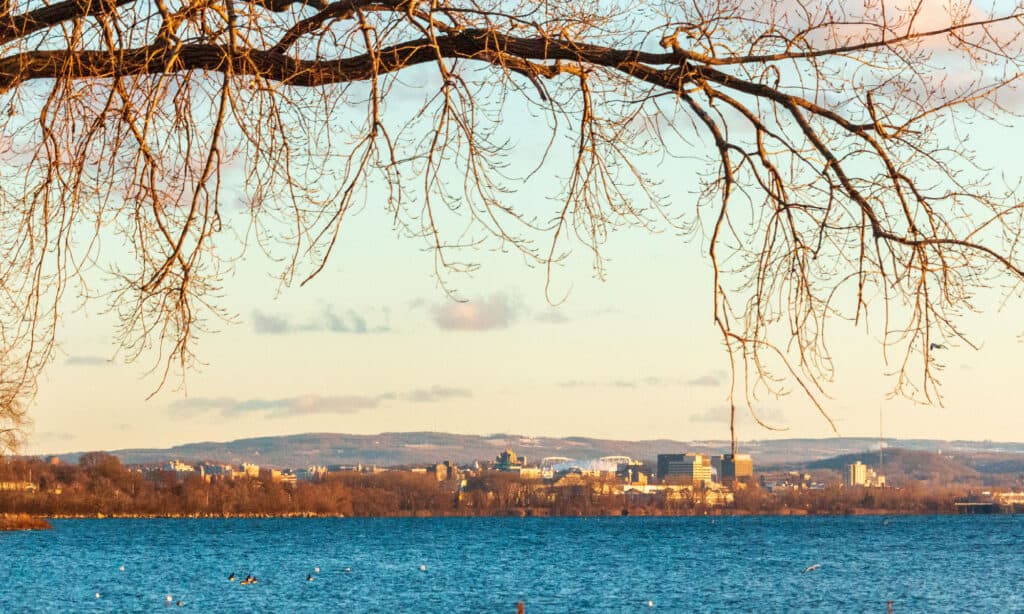
iStock.com/JUN DONG
Onondaga Lake is a testament that people do not always respect nature, even when it threatens an urban community. This Lake was previously considered sacred by the local Onondaga Native Americans, but it has somewhat become a draw with beaches, hotels, and recreation, but not for long. Unfortunately, as the area got more industrialized, the lake became a major source of pollution since untreated trash was dumped in it for many years. Sadly, Onondaga Lake is now the most polluted lake in the United States and one of the most polluted lakes in the world.
Boiling Lake

iStock.com/pabst_ell
The name is self-explanatory. Boiling Lake, located in Dominica, a picturesque Caribbean island, is the second-largest natural hot spring. The “cool” outer margins of the lake keep temperatures around 180 and 197 degrees Fahrenheit. However, no one has had the bravery to measure the temperature in the lake’s core, where images show the water boiling. The temperature can’t be controlled because of a breach in the lake bed where molten lava escapes. Even if the temperature drops, the water is unreliable since it can boil at any time, releasing hazardous gases like carbon dioxide.
Horseshoe Lake
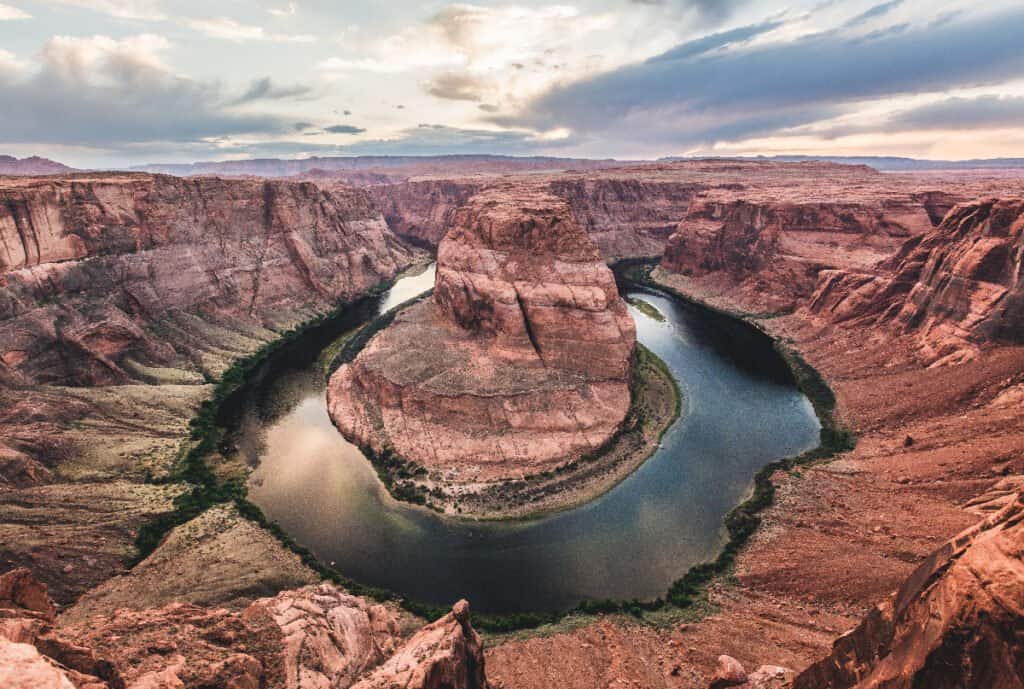
Markue/Shutterstock.com
Horseshoe Lake is located in the Sierra Nevada mountains and is part of the City of Mammoth Lakes, formed by a volcano. The soil surrounding this place has high quantities of carbon dioxide and hydrogen sulfide, threatening the trees and people. It was discovered that extraordinarily high carbon dioxide levels were leaking from the soil and destroying the trees. Today, there are 100 acres of dead and dying trees around the area. To give you an idea of how deadly it can be, consider that three individuals died of carbon dioxide exposure in a cave near the lake in 2006.
Karachay Lake
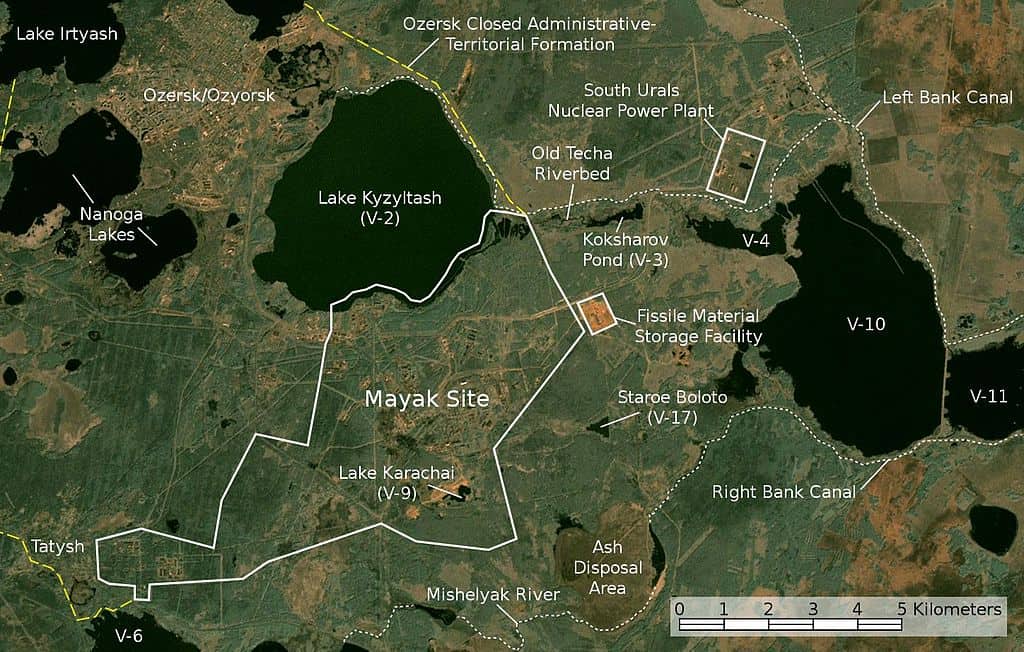
NASA, Jan Rieke (color correction, borders and labels) / This work is based on a work in the public domain. It has been digitally enhanced and/or modified. This derivative work has been (or is hereby) released into the public domain by its author, JanRieke. This applies worldwide.
Located in Russia, Karachay Lake is another one of the most polluted lakes in the world to make this list. Don’t get fooled by its deep blue water, as it is too toxic, it kills. It is regarded as the most polluted lake or site globally. Between 1934 and 1957, the Soviet Union used the lake as a nuclear waste dump for 12 years. According to sources, high-level radioactive waste is said to cover nearly the whole lake, down to a depth of 3.4 meters (11 feet). In some areas around the lake, radiation levels are high enough to kill a human in as little as 30 minutes.
Lake Michigan
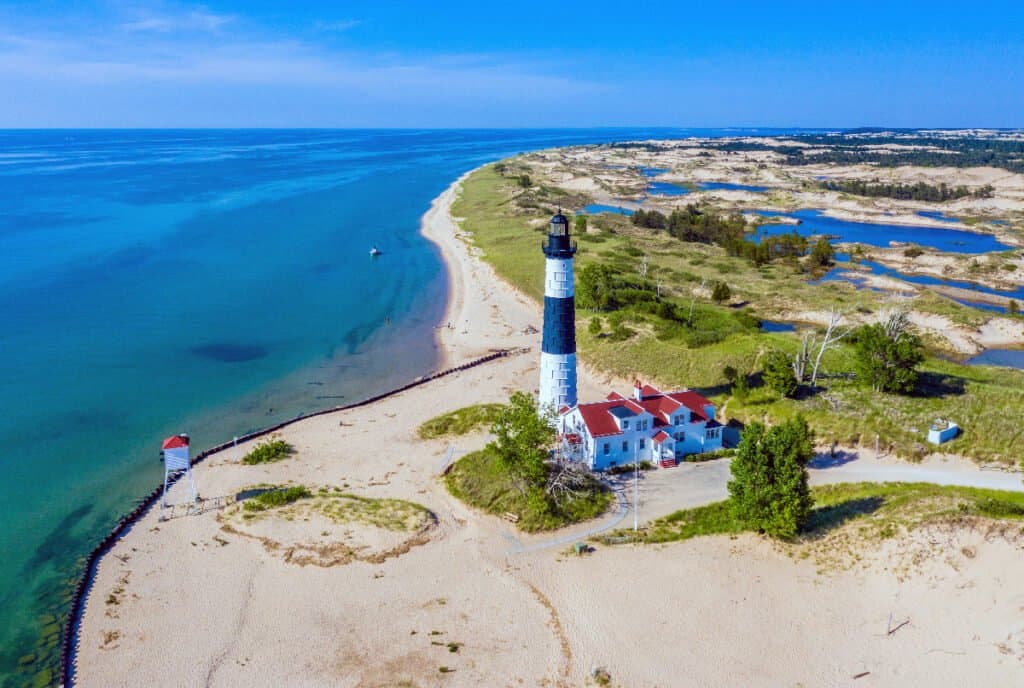
Frederick Millett/Shutterstock.com
Lake Michigan is considered the lake that holds the most deaths among the five Great Lakes in North America. Despite its reputation for powerful undercurrents claiming a minimum of a few lives each year, the warm, welcoming water is a favorite swimming spot for locals and visitors. The geometry of Lake Michigan makes it specifically vulnerable to deadly currents, which are exacerbated by piers and docks, resulting in deaths and injuries. When rapid and severe fluctuations in air and water temperatures boost the spontaneity and power of the currents and waves, the lake becomes more fatal in the fall months.
Frying Pan Lake
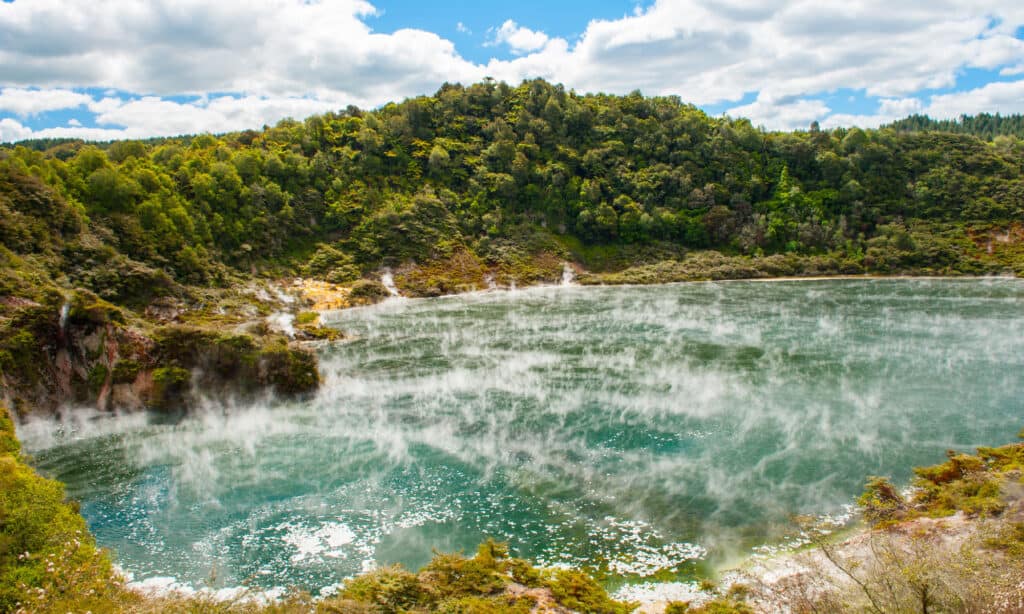
iStock.com/Fyletto
As one might expect from its name and location in New Zealand’s Waimangu Volcanic Rift Valley, Frying lake gets quite heated. It’s so hot that it stays about 113 to 131 degrees Fahrenheit (45 to 55 degrees Celsius), making it one of the world’s least inviting hot springs. The lake is over 400,000 square feet in size (38,000 square meters) and is normally only 18 feet (5.5 meters) deep. At vents, however, it can be as deep as 60 feet (18 meters). Hydrogen sulfide and carbon dioxide are emitted by the lake, making it utterly dangerous. The explosion that formed the crater, known as the Mount Tarawera eruption, claimed the lives of over 100 people in 1886. Therefore, it has a tragic human past.
The Blue Lagoon

iStock.com/P_L_photography
The Blue Lagoon is, or used to be, one of the most gorgeous “lakes” on the list. The lake used to have a lovely brilliant blue tinge to it, which drew swimmers in. Despite several warnings and signs, people continued to swim in the lake, created by a catastrophic flood, for decades. This ‘lake’ was lovely, but it was also poisonous. Its blue color comes from caustic chemicals. Chemical exposure can irritate the skin and cause digestive troubles and other disorders.
Laguna Caliente
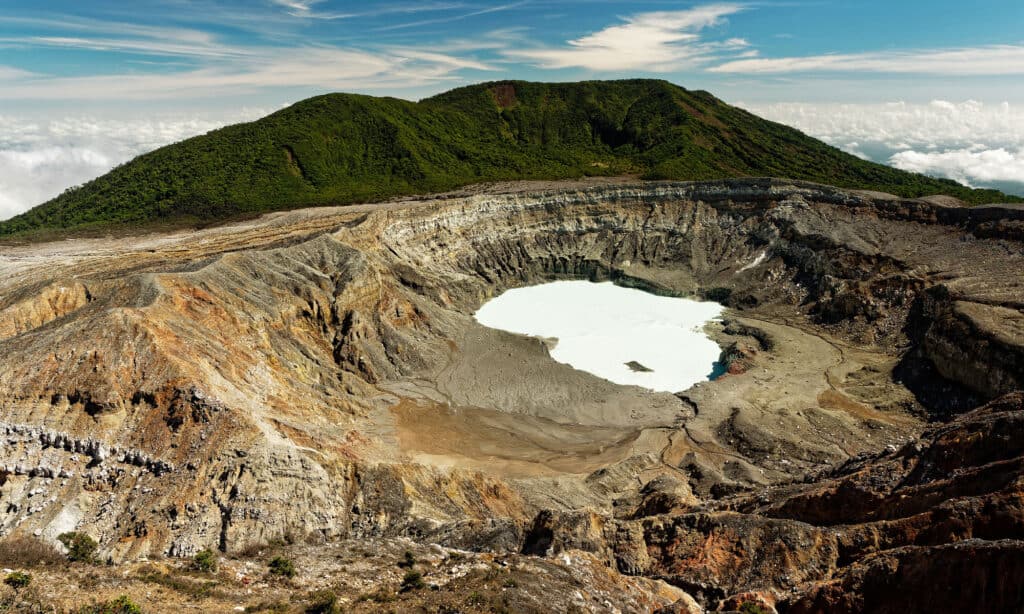
iStock.com/phototrip
Located in Costa Rica, Laguna Caliente is one of the world’s most acidic natural lakes. Its size varies greatly, as it can reach a depth of 160 feet. Temperatures range from 71 to 200 degrees Fahrenheit, with colors ranging from emerald green to gray and yellow. The yellow color comes from the liquid sulfur floating in the air. As a result of the high quantities of acid and repeated explosions, acid rain and fog occur, wreaking havoc on the flora around the lake. As a result, the lake may be hazardous to people.
More from A-Z Animals
.more-snake-card-image { max-height:140px !important; }
@media (min-width: 481px) {
.mobile-top-content {
display: none;
}
}
#mobileTopContentCTACarouselControls { overflow: hidden; text-overflow: ellipsis; white-space: nowrap; }
.mobile-top-content .more { color: #fff; }
.mobile-top-content a { color: #fff; text-decoration: underline; }
.mobile-top-content a:hover { color: #fff; text-decoration: underline; }
@media (max-width: 480px) {
.mobile-top-content {
background-color: #06a10b;
color: #fff;
text-align: center;
/*height: 60px;
padding-top:5px;*/
font-size:80%;
/* display: block; */
margin: 0px -30px;
}
}
Lakes provide humans and wildlife a plethora of functions and benefits, ranging from drinking water, habitat or residency, and hydroelectric power. However, not all lakes give life – some of them can take life and destroy wildlife. There are various reasons why lakes can be so deadly. From being nestled near volcanoes down to getting dumped with radioactive and toxic chemicals, several lakes around the globe can be so dangerous that they could kill. This article will list down the 12 deadliest lakes in the world, where to find them, and the tragic stories that lie underneath.
The 12 Deadliest Lakes in the World
Lake Nyos

United States Geological Survey / This image is in the public domain in the United States because it only contains materials that originally came from the United States Geological Survey, an agency of the United States Department of the Interior. For more information, see the official USGS copyright policy.
Lake Nyos is a crater lake in the Northwest Region of Cameroon. It’s a deep lake high on the crater rim of an extinct volcano in Cameroon’s Oku volcanic plain. Although it may appear to many as an ordinary lake, it is considered the world’s deadliest. The Lake Nyos Disaster, which occurred in 1986, rocked Africa when the lake unexpectedly unleashed a giant cloud of carbon dioxide in the middle of the night, killing over 1,700 people living around the lake and 3,500 animals. After the disaster, most of the towns and villages in the area were abandoned.
The cause of the gas explosion may be summed up in two words: carbon dioxide. The carbon dioxide in Lake Nyos was suppressed beneath the lakes’ waters until it was released quickly, resulting in a spontaneous, swift, and quiet disaster.
Lake Natron

iStock.com/Mario Faubert
Africa is not only home to deserts and wildlife. It also has many rainforests, savannas, and lakes, with the greatest of them ranking as the world’s second-largest freshwater lake. Yet, the continent is also home to the infamous killer lakes that no wildlife or human settlement is known to be kept safe.
Located in Tanzania, Lake Natron is considered one of the deadliest lakes in the world. It’s a very picturesque lake that’s home to millions of flamingos. It is, nevertheless, extremely toxic to humans. The high amounts of evaporation in the area have resulted in alkalinity of up to 12 pH. The cyanobacteria that reside in the lake have turned it crimson. Yet, contrary to popular belief, the alkaline waters of Lake Natron, in reality, sustain a healthy ecology of flamingos and other wetland birds, tilapia, and the algae that enormous flocks of flamingos feed.
Lake Kivu

iStock.com/atosan
Along with Lake Nyos, Lake Kivu is another killer lake in Africa. It is among the only three “exploding lakes” globally and is one of the deadliest lakes known to mankind. On the border between Rwanda and the Democratic Republic of the Congo, Lake Kivu is one of several lakes that line the East African Rift Valley. The famed African lake has a surface size of 1,040 square miles (2,700 square kilometers) and is one of the continent’s largest. Lake Kivu is a fascinating subject for scientists and a potential source of risk and riches for the millions of people living nearby due to its strange mix of characteristics.
Although Lake Kivu is a beautiful lake, it acts differently than most deep lakes, making it dangerous. The picturesque Lake Kivu has the potential to erupt in a rare limnic eruption, releasing lethal chemicals into the atmosphere.
Lake Monoun

Prosper Mekem / Creative Commons – License
Lake Monoun, a crater lake in Cameroon’s West Province, is another dangerous African lake that erupted in the 1980s. On August 15, 1984, a limnic eruption at the lake occurred, resulting in the release of a significant amount of carbon dioxide and the deaths of 37 individuals. Lake Monoun is one of the only three lakes in the world with significant amounts of gas absorbed and repressed deep beneath the lake’s water surface, creating the ideal conditions for a limnic eruption. When dissolved CO2 erupts from deep lake waters, creating a gas cloud that can suffocate wildlife, cattle, and humans, it is known as a limnic eruption. A tsunami could develop from a limnic eruption because rising CO2 displaces water.
Onondaga Lake

iStock.com/JUN DONG
Onondaga Lake is a testament that people do not always respect nature, even when it threatens an urban community. This Lake was previously considered sacred by the local Onondaga Native Americans, but it has somewhat become a draw with beaches, hotels, and recreation, but not for long. Unfortunately, as the area got more industrialized, the lake became a major source of pollution since untreated trash was dumped in it for many years. Sadly, Onondaga Lake is now the most polluted lake in the United States and one of the most polluted lakes in the world.
Boiling Lake

iStock.com/pabst_ell
The name is self-explanatory. Boiling Lake, located in Dominica, a picturesque Caribbean island, is the second-largest natural hot spring. The “cool” outer margins of the lake keep temperatures around 180 and 197 degrees Fahrenheit. However, no one has had the bravery to measure the temperature in the lake’s core, where images show the water boiling. The temperature can’t be controlled because of a breach in the lake bed where molten lava escapes. Even if the temperature drops, the water is unreliable since it can boil at any time, releasing hazardous gases like carbon dioxide.
Horseshoe Lake

Markue/Shutterstock.com
Horseshoe Lake is located in the Sierra Nevada mountains and is part of the City of Mammoth Lakes, formed by a volcano. The soil surrounding this place has high quantities of carbon dioxide and hydrogen sulfide, threatening the trees and people. It was discovered that extraordinarily high carbon dioxide levels were leaking from the soil and destroying the trees. Today, there are 100 acres of dead and dying trees around the area. To give you an idea of how deadly it can be, consider that three individuals died of carbon dioxide exposure in a cave near the lake in 2006.
Karachay Lake

NASA, Jan Rieke (color correction, borders and labels) / This work is based on a work in the public domain. It has been digitally enhanced and/or modified. This derivative work has been (or is hereby) released into the public domain by its author, JanRieke. This applies worldwide.
Located in Russia, Karachay Lake is another one of the most polluted lakes in the world to make this list. Don’t get fooled by its deep blue water, as it is too toxic, it kills. It is regarded as the most polluted lake or site globally. Between 1934 and 1957, the Soviet Union used the lake as a nuclear waste dump for 12 years. According to sources, high-level radioactive waste is said to cover nearly the whole lake, down to a depth of 3.4 meters (11 feet). In some areas around the lake, radiation levels are high enough to kill a human in as little as 30 minutes.
Lake Michigan

Frederick Millett/Shutterstock.com
Lake Michigan is considered the lake that holds the most deaths among the five Great Lakes in North America. Despite its reputation for powerful undercurrents claiming a minimum of a few lives each year, the warm, welcoming water is a favorite swimming spot for locals and visitors. The geometry of Lake Michigan makes it specifically vulnerable to deadly currents, which are exacerbated by piers and docks, resulting in deaths and injuries. When rapid and severe fluctuations in air and water temperatures boost the spontaneity and power of the currents and waves, the lake becomes more fatal in the fall months.
Frying Pan Lake

iStock.com/Fyletto
As one might expect from its name and location in New Zealand’s Waimangu Volcanic Rift Valley, Frying lake gets quite heated. It’s so hot that it stays about 113 to 131 degrees Fahrenheit (45 to 55 degrees Celsius), making it one of the world’s least inviting hot springs. The lake is over 400,000 square feet in size (38,000 square meters) and is normally only 18 feet (5.5 meters) deep. At vents, however, it can be as deep as 60 feet (18 meters). Hydrogen sulfide and carbon dioxide are emitted by the lake, making it utterly dangerous. The explosion that formed the crater, known as the Mount Tarawera eruption, claimed the lives of over 100 people in 1886. Therefore, it has a tragic human past.
The Blue Lagoon

iStock.com/P_L_photography
The Blue Lagoon is, or used to be, one of the most gorgeous “lakes” on the list. The lake used to have a lovely brilliant blue tinge to it, which drew swimmers in. Despite several warnings and signs, people continued to swim in the lake, created by a catastrophic flood, for decades. This ‘lake’ was lovely, but it was also poisonous. Its blue color comes from caustic chemicals. Chemical exposure can irritate the skin and cause digestive troubles and other disorders.
Laguna Caliente

iStock.com/phototrip
Located in Costa Rica, Laguna Caliente is one of the world’s most acidic natural lakes. Its size varies greatly, as it can reach a depth of 160 feet. Temperatures range from 71 to 200 degrees Fahrenheit, with colors ranging from emerald green to gray and yellow. The yellow color comes from the liquid sulfur floating in the air. As a result of the high quantities of acid and repeated explosions, acid rain and fog occur, wreaking havoc on the flora around the lake. As a result, the lake may be hazardous to people.


